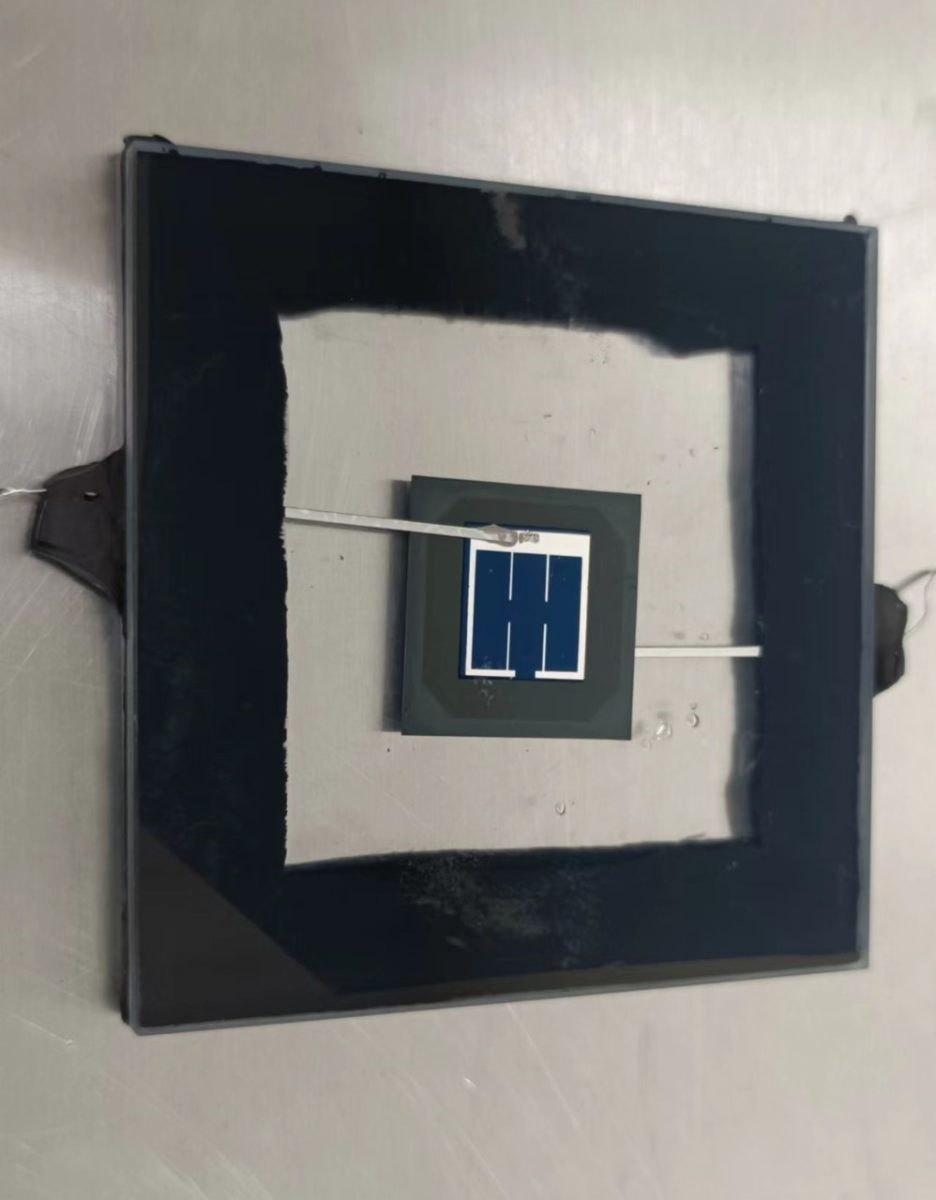Scientists led by Saudi Arabia’s King Abdullah University of Science and Technology (KAUST) have fabricated a monolithic perovskite-silicon tandem photovoltaic device which they claim shows minimized cell-to-module losses.
The device is based on a tandem solar cell with an area of around 1 cm2, based on an n-i-p perovskite stacked on top of a silicon heterojunction, which the same researchers unveiled in December 2021. The single-junction perovskite sub-cell was built on a substrate made of glass and an indium tin oxide (ITO) layer, an electron transport layer (ETL) made of the 2PACz carbazole additive, the perovskite layer, lithium fluoride (LiF), a bathocuproine (BCP) buffer layer, and a silver (Ag) metal contact.
The first attempts to put the cell into a module configuration resulted in an efficiency drop from 28.9 to 25.7%, which the academics attributed to a 1.7 mA/cm2 drop in short-circuit current density from cell (19.6 mA/cm2) to module (17.9 mA/cm2). “The reduction in efficiency is due to a refractive index mismatch after the introduction of glass and the polyurethane directly on solar cells without cell-to-module optimization, which resulted in enhanced reflection of the incoming light,” the research's corresponding author, Lujia Xiu, told pv magazine. “We decided to reduce this front reflection loss through an optical redesign of the module through refractive-index engineering.”
The research team moved the magnesium fluoride (MgF2) anti-reflecting coating used for the cell from the top of the cell to the top of the module front glass, which they said resulted in a reduction of the front reflection. “As a result, the tandem short-circuit current density increases by 0.7 mA/cm2 (from 17.9 to 18.6 mA/cm2) in the new configuration, enabling a monolithic perovskite/silicon tandem module power conversion efficiency increment from 25.7% to 26.2%.”
The Saudi group introduced the cell in the study “Monolithic Perovskite/Silicon Tandem Photovoltaics with Minimized Cell-to-Module Losses by Refractive-Index Engineering,” published in ACS Publications. “We now hope to explore how different materials and texturing the material surface could reduce the current losses from cells to modules even further,” said Xu.
The same research group recently announced an inverted perovskite-silicon tandem solar cell with a 1 nm thick interlayer based on magnesium fluoride (MgFx) placed between the perovskite layer and the hole transport layer (HTL), in order to reduce voltage losses.
This content is protected by copyright and may not be reused. If you want to cooperate with us and would like to reuse some of our content, please contact: editors@pv-magazine.com.




1 comment
By submitting this form you agree to pv magazine using your data for the purposes of publishing your comment.
Your personal data will only be disclosed or otherwise transmitted to third parties for the purposes of spam filtering or if this is necessary for technical maintenance of the website. Any other transfer to third parties will not take place unless this is justified on the basis of applicable data protection regulations or if pv magazine is legally obliged to do so.
You may revoke this consent at any time with effect for the future, in which case your personal data will be deleted immediately. Otherwise, your data will be deleted if pv magazine has processed your request or the purpose of data storage is fulfilled.
Further information on data privacy can be found in our Data Protection Policy.